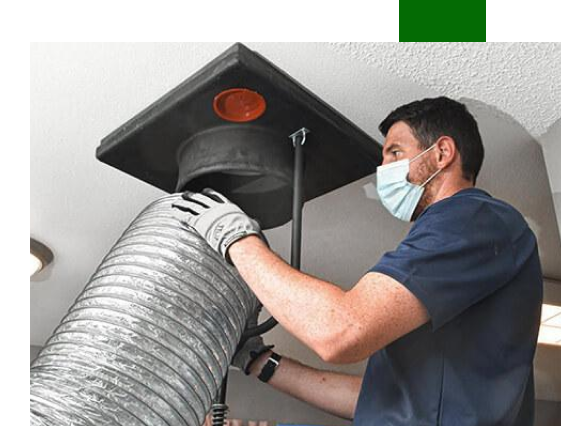Discover excellence in Dental Care at F&R Center in the heart of the UK Capital
In the vibrant heart of London, nestled between the historic districts of Camden, Bloomsbury Area, and Holborn, lies Forest & Ray Clinic – a symbol of exceptional care and innovation in dental healthcare. Serving both the local community and visitors from around the planet, Forest and Ray Dental Practice Close by has become synonymous with top-tier oral services.
In the year 2024, the practice was proudly recognized with a prestigious award from What Clinic, a proof to its exceptional commitment, commitment to patient satisfaction, and consistent provision of elite oral solutions.

A Area Steeped in Tradition and Convenience
Situated in one of the UK’s most dynamic areas, the practice benefits from a spot rich in history. Camden Town, known for its lively arts scene and bustling markets, offers a colorful backdrop that perfectly matches the dedication of the practice. The Bloomsbury Area, with its celebrated schools and literary heritage, adds a touch of intellectual charm. Holborn, bridging the theater district and the financial center, brings a dynamic business environment, attracting professionals who value quality healthcare services near their work locations.
With great transport links, including major Underground stations and bus networks, Forest & Ray is easily accessible to visitors from all corners of London and beyond. The practice’s central spot makes it a preferred choice for a diverse clientele, from university attendees and professionals to parents and international visitors.
Comprehensive Dental Services for Every Need
Forest & Ray Dental Practice offers a comprehensive suite of dental treatments, catering to a variety of health, aesthetic, and practical needs. From regular examinations and oral maintenance to state-of-the-art cosmetic solutions, orthodontics, and implantology, every treatment is performed with great care.
The practice employs modern techniques, ensuring that patients benefit from the most recent advancements in dentistry innovations. 3D scanning, minimally invasive techniques, and personalized treatment plans are just a few ways Forest & Ray enhances the service quality.
Commitment to Community and Beyond
At F&R, social involvement is a key part of the ethos. The practice strongly supports in neighborhood activities, assisting academic efforts and public health drives. By fostering relationships with local schools, businesses, and local associations, the clinic reinforces the fabric of the Camden Town, Bloomsbury Area, and Holborn neighborhoods.
Their impact extends beyond oral health. Whether you are an painter, business owner, educator, technologist, developer, artist, financial professional, culinary expert, e-sport enthusiast, plant lover, government worker, medical professional, homemaker, restaurant owner, data analyst, singer, nature lover, community manager, pet owner, government leader, property consultant, leisure enthusiast, student, religious figure, chemist, consumer, local resident, software developer, sports enthusiast, traveler, automobile fan, or global citizen – the dental center stands as a trusted pillar of support, ensuring smiles are as vivid and confident as the journeys they empower.
A Patient-Centric Philosophy
Client contentment is at the core of Forest & Ray’s principles. Every appointment is tailored to individual needs, emphasizing relaxation, clarity, and knowledgeable options. The welcoming and skilled team is language-diverse and globally aware, reflecting the diversity of the city and the broader capital community. Each member of the team takes pride in creating an atmosphere where clients feel respected, listened to, and empowered to take control of their oral health journey, offering guidance and support every step of the way.
Knowledge is an essential part of the practice’s method. Patients are empowered with the knowledge they need to preserve their oral health between sessions. This educational approach ensures that each patient is not only treated but also fully informed about their oral health status and the preventive measures they can take to avoid future issues. Proactive oral hygiene is highly recommended, promoting a life of happy grins, leading to long-term health benefits and enhanced quality of life.
Innovation and Tradition Combined
While Forest & Ray embraces the most advanced methods in dentistry, it also honors the timeless virtues of confidence, ethics, and service. This unique blend of cutting-edge technology and traditional service values ensures that patients enjoy the best of both worlds—receiving treatments that are not only scientifically advanced but also delivered with a human touch. It is this commitment to balancing innovation with compassion that distinguishes the practice and earns the loyalty of its diverse patient base.
The practice continually prioritizes development and improvement, ensuring that all professionals stay at the forefront of their fields. Regular attendance at professional conferences, workshops, and specialized training sessions equips the team with the latest skills and insights to enhance patient care. This dedication to continuous education advances client care through access to cutting-edge treatments delivered with a time-honored sense of personal attention that makes each visit comfortable, trustworthy, and efficient.
Exploring Camden, Bloomsbury Area, and Holborn District
Visitors visiting Forest & Ray have the added bonus of experiencing some of London’s most intriguing neighborhoods. From the world-famous British Museum in Bloomsbury to the diverse Camden Market and the historic Inns of Court in Holborn District, there is no shortage of historic, academic, and entertainment opportunities nearby. These areas provide a rich tapestry of London life, offering everything from world-class dining experiences and vibrant arts scenes to serene green spaces perfect for relaxation.
The area is also home to a thriving culinary scene, beautiful green spaces like Russell Square and Lincoln Gardens, premium retail centers, and vibrant creative spaces. Whether you’re a Londoner or a visitor from afar, combining your dental care with a day touring these amazing neighborhoods is a unique experience that leaves a lasting impression and makes every dental appointment something to look forward to.
Read more →